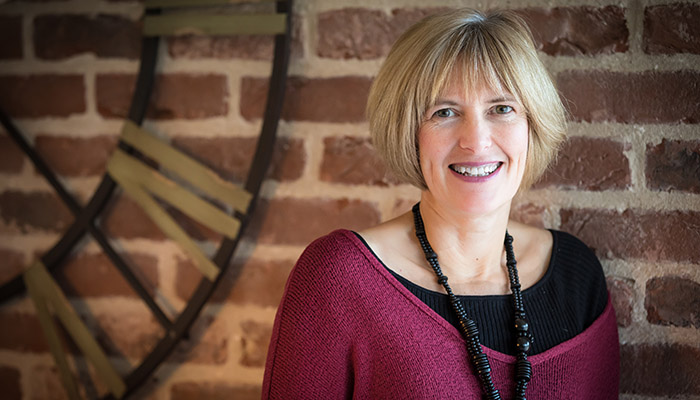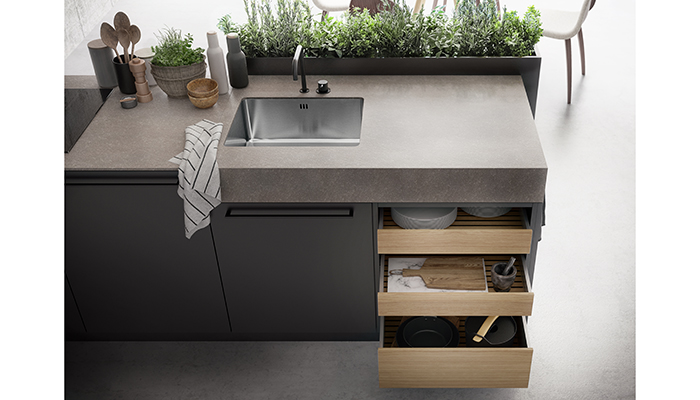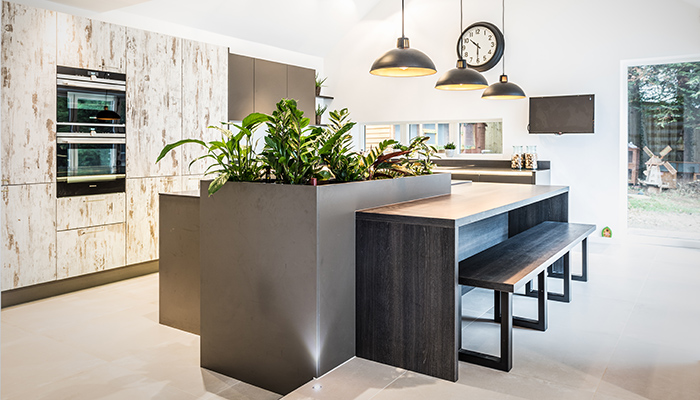Helena Myers of The Myers Touch on working with biophilic design

Helena Myers of The Myers Touch on working with biophilic design
Biophilic design is about more than making space for some indoor pot plants. From herb troughs, to outdoor lighting, The Myers Touch director Helena Myers considers how to improve a kitchen design's connection to nature, and all that is natural.

Q: What are the key benefits of introducing biophilic elements in kitchen design, in your view?
A: Biophilic design takes the amazing elements of nature and transports them into clients’ homes, using our attraction to nature and natural processes to improve the spaces we live in. Just as nature brings us relief, peace and wonder, the incorporation of biophilic design is known to have positive benefits to our mental health and well-being. Kitchen/living spaces can be transformed into an oasis of calm and creativity, life and vitality, simply through successfully bringing nature's imprint into the home.
Q: Tell us about the different and most successful ways to integrate biophilic design in kitchens.
A: There are so many opportunities for using biophilic design in a wide variety of ways in kitchen design. Always think about maximising natural light, either from above, a set of patio doors or large bi-folds – the view itself will bring the outdoors in. Then consider use of planters, herb troughs or living walls in which customers can either grow food to eat, or simply to enjoy. Think about clever ways you can get the movement of nature inside your client’s home, for example the new downdraft hobs create a fantastic visible flow of steam when in use, bringing its own smile, just like when we stand and watch the waves on the shore. Remember too, that adding simple solar lights in the garden that light up at night, will replace that ‘black glass’ wall look with a night view of the garden, and an automatic visual extension of the kitchen space.
Q: What locations work best?
A: Biophilic is for all locations, but works best if you can tie in the natural world around you. So think about how water can feature in designs (aquarium, water feature, photos of rivers or the sea), or woodland (a chunky breakfast bar, wooden flooring, green wall covering), or the beach (limestone flooring, fossil worktops, a glass splashback featuring underwater scenes). Simply take a look outside around you and draw in inspiration for your designs.

Q: What are practical elements to consider and key things to avoid?
A: Speaking practically, it’s not always possible to mimic aspects of nature and not everyone is a nurturer of plants. It’s not always possible to use colours that imitate nature either, so think about other ways to incorporate biophilic design, for example, clients may like to use faux plants rather than real ones. Be careful though – you generally get what you pay for, and some cheaper faux plants will change to a nasty blue-green in the sunlight and ruin that natural look.
Q: Do you have any hot tips to pass on to a retailer wishing to incorporate biophilic elements in their own designs?
A: Biophilic design isn’t all about plants – it’s about incorporating all of nature's wonder into our clients' homes and lives. For me, shadows play a huge role in creating and adjusting mood in kitchen design. It’s great if you can increase the sources of natural light into a room across the compass range, and add a balance of large solid items (like furniture), mixed with smaller but still significantly sized accessories (like wire bowls, window slats or framed geometric objects). The hourly movement of light throughout this space will then give you delight and calm, without you perhaps even realising it!

Tags: insight, features, helena myers, myers touch, biophilic design, kitchens

























